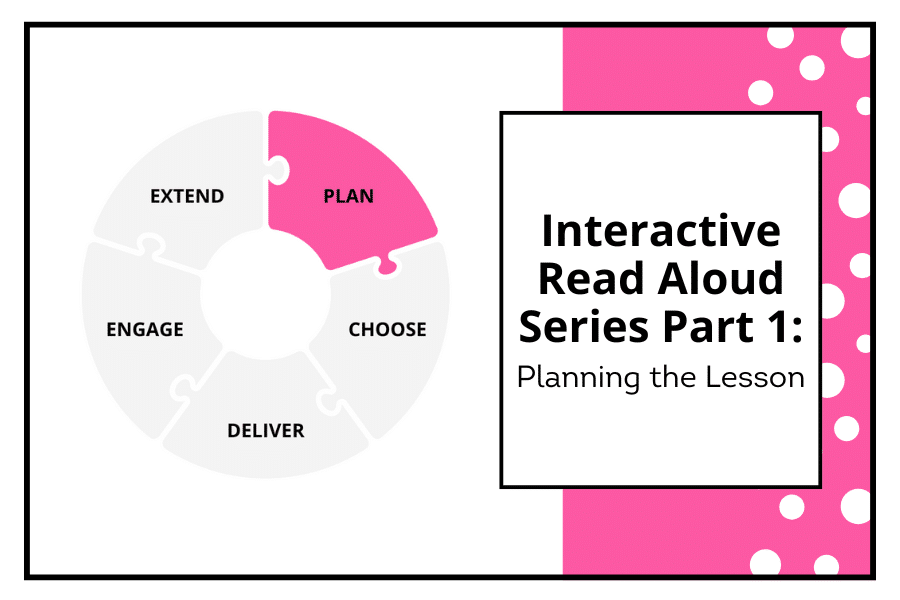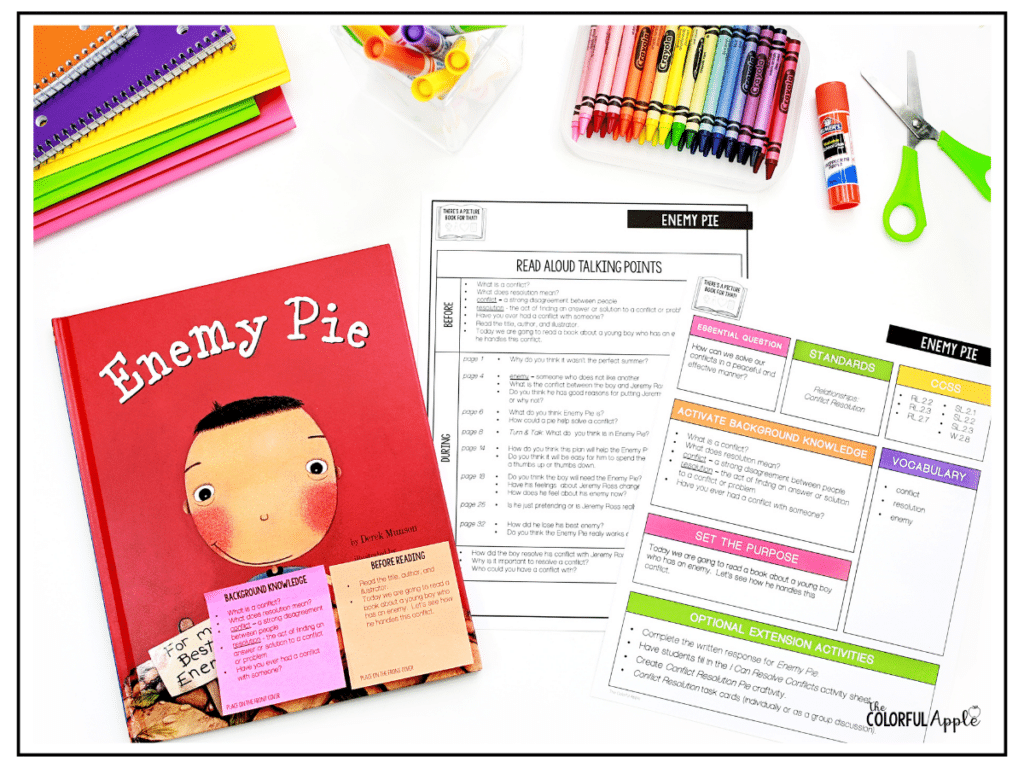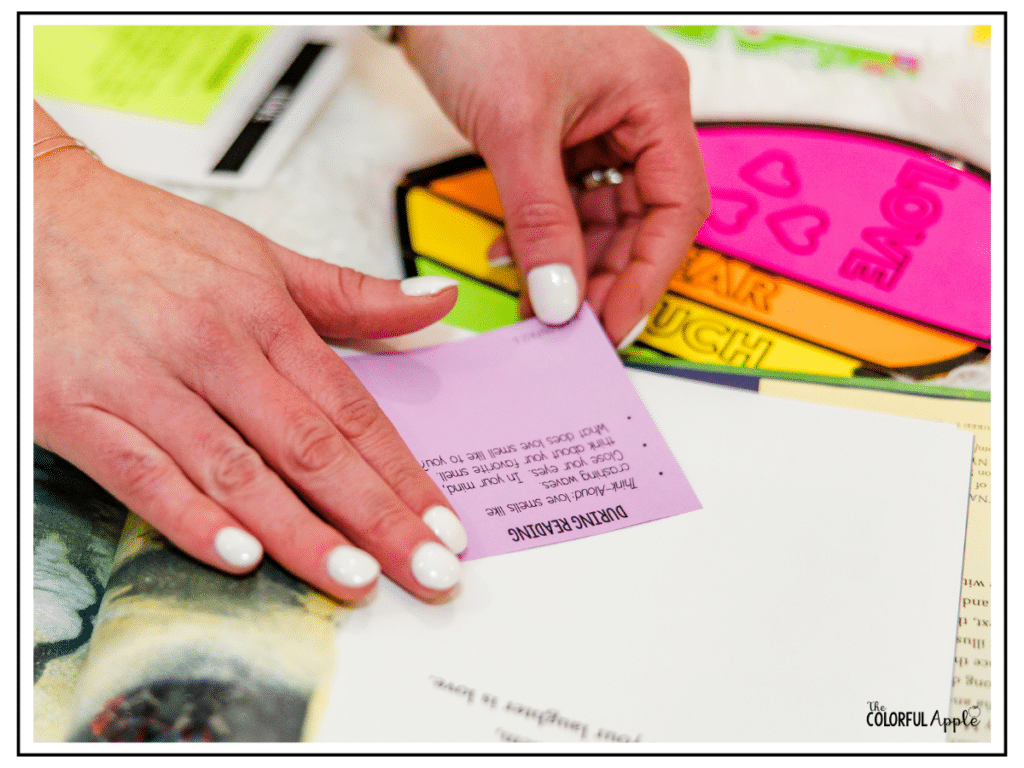Interactive Read Aloud Series Part 1:
How to Plan the Lesson

Have you ever grabbed a picture book off your shelf with the best intentions, started reading it to your class, and then realized halfway through that you completely forgot to make it meaningful? Or maybe you’ve gotten to the end of a beautiful story and thought “Wait – what was I even trying to teach here?”
We’ve all had those moments, and they’re exactly why thoughtful planning makes such a difference in our read alouds.
Why Teachers Struggle with Read Aloud Planning
When I recently surveyed over 7,000 teachers about their biggest read aloud challenges, planning came up again and again. Teachers shared things like:
“I never have enough time to plan meaningful lessons!” “I get to the end of the book and realize I forgot to actually teach anything!” “I’m always scrambling to come up with questions as I read.” “Sometimes I have a great lesson planned but completely forget what I wanted to teach.”
If you’re nodding your head right now, you’re definitely not alone. With packed schedules and a million other things to plan, it’s no wonder that read aloud planning often gets pushed to the back burner. But here’s the thing – with some intentional planning (that doesn’t take hours!), we can make every read aloud count.
Why Planning Ahead Matters
Planning ahead is crucial for three main reasons:
- It helps us stay focused on what our students actually need, rather than getting carried away with all the possibilities in a great book
- It frees us up to enjoy the text WITH our students instead of thinking on our feet
- It ensures we don’t forget those important teaching moments in the heat of reading
The Simple Planning Framework That Works
I’m going to share my straightforward planning framework that you can use over and over again. The key is to start with your end goal in mind. I know it sounds obvious, but I can’t tell you how many times I’ve gotten excited about a book and jumped right in without really thinking about my teaching goal!
Step 1: Choose Your Focus
Pick ONE focus for your lesson. Just one. I know it’s tempting to try to cover character traits AND theme AND vocabulary all at once, but trust me – when we try to teach everything, we often end up teaching nothing well. Your focus might be something like “understanding how a character’s feelings change throughout a story” or “identifying the main idea and supporting details.”
Step 2: Plan Your Before Reading
This is where so many of us struggle – I hear from teachers all the time who feel overwhelmed just trying to figure out how to introduce a book! Here’s what you want to plan for before reading:
- A quick introduction of the title, author, and illustrator (but keep it brief!)
- One or two questions to activate background knowledge
- Your purpose for reading statement
When I say “purpose for reading statement,” I don’t mean anything fancy. It’s as simple as saying something like, “Today as we read, we’re going to pay special attention to how the main character’s feelings change throughout the story.” That’s it! Just let your students know what to focus on.
Step 3: Plan Your During Reading Stopping Points
This is where I see teachers struggle the most. One second-grade teacher recently emailed me saying, “I either ask too many questions and lose the flow of the story, or I get so caught up in reading that I forget to ask any questions at all!”
Here’s my framework for during reading:
- Choose 2-3 strategic stopping points – and stick to them! These should be natural pauses in the story where you can focus on your teaching point.
- Plan one strong question for each stopping point
- Consider what vocabulary you might need to clarify (but don’t overwhelm them – pick just 2-3 key words)
Step 3: Plan Your After Reading
After reading is where we often run into the time crunch, right? You get to the end of the book and – oh no! – there are only three minutes left before lunch! This is why planning your after reading piece is so crucial.
Plan for:
- One strong closing question that ties back to your teaching point
- A quick way for students to share their thinking (like a turn and talk or stop and jot)
- An optional extension activity if time allows
My Favorite Time-Saving Planning Trick
Here’s my absolute favorite planning hack – I call it the sticky note method. Instead of trying to remember everything you want to say or ask, write your key questions and teaching points on bright sticky notes and put them right in the book where you want to stop. This way, you’re not fumbling with lesson plans while trying to hold a book and manage your class.
The best part? Those sticky notes are still in the book for next year! Talk about working smarter, not harder.
Remember: Less is More
For a typical picture book, aim for:
- 1-2 before reading questions
- 2-3 strategic stopping points during reading
- 1-2 after reading discussion points
Remember, we want to maintain the flow and joy of the story while still making it meaningful. It’s better to have a few really strong questions than too many surface-level ones.
Ready to Start Planning?
Remember, the goal isn’t perfect planning – it’s intentional planning that helps you and your students get the most out of your read aloud time together. Start with one book, one focus, and give this framework a try. I think you’ll be amazed at how much more confident you feel going into your read alouds!
What’s your biggest challenge when it comes to planning read alouds? Share in the comments below – I’d love to help troubleshoot with you!

